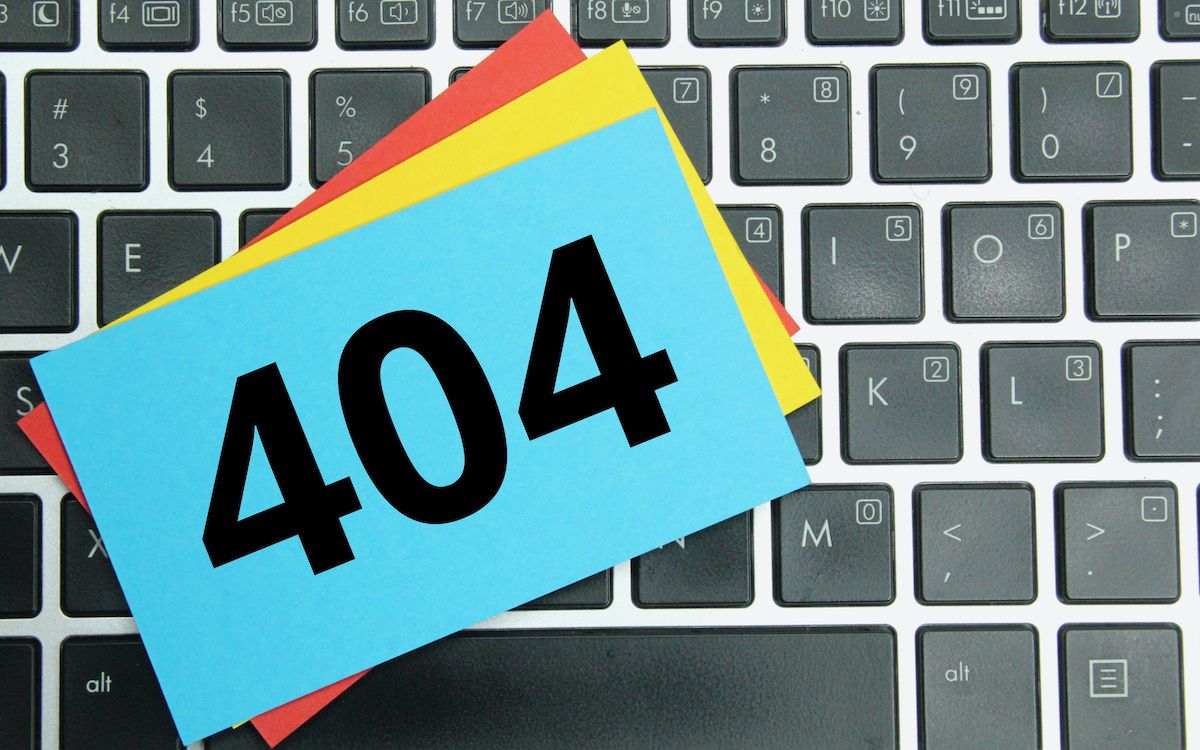
Marketing specialists often hear questions regarding pending 404 errors. Even if you’ve run into “404 not found” pages occasionally while using the internet, you may not be 100% clear on what they really mean or how they work. Whether a long list of errors has you at a dead end or you’re simply interested in equipping yourself with some additional information, here is everything you need to know about the dreaded 404 message.
What is a 404 error?
As the world of the internet took shape, errors developed—and so a system of three-digit error codes was developed to distinguish the errors. The first digit of each code (ranging from 1 to 5) designates the category of error. All codes in the 4xx range stand for client errors, which means that the site as a whole can be accessed, but this particular resource/page cannot. The second and third digits stand for the specific error encountered—in the case of 404, the resource/page cannot be found at all right now, but may be available again in the future.
Are 404 errors inherently bad?
It’s easy to associate the often vague messages of 404 errors with some administrative catastrophe demanding immediate and thorough attention. It is also unsurprising that many site owners will wonder whether or not a large number of 404 errors is always indicative of a much larger, holistic problem.
Fortunately in most instances, this is not the case. Errors like this most commonly occur when irrelevant or old content is removed from your site, usually by way of removing products or categories. Since neither Google nor other search engines directly penalize for the mere existence of 404 errors, it’s not always necessary to address them. But if you do, they tend to occur in easy-to-manage batches.
When do I need to address 404 errors?
404s are an appropriate way to let search engines know when a page is no longer available and will never become available again. If you've discontinued a brand, moved category content, or deleted a previously indexed blog or article, ask yourself these three questions when deciding whether or not you should implement a strategy to create redirects for missing pages:
Does the missing page affect your link profile?
If so, this error should probably be addressed. You've worked hard to gain high-quality links that improve your site's SEO authority, and a broken link undoes those efforts. If a deleted page results in broken backlinks, use a 301 redirect to preserve some of the SEO value of that link.
Did the missing page previously receive a substantial amount of visitors or produce valuable revenue?
If the URL in question previously belonged to a page that earned a lot of traffic or revenue for your business, the 404 error should be addressed. We advise using a 301 redirect to guide customer traffic to a similar page (if one exists), or create a new page explaining why the product, article or blog post is no longer available.
Is there a comparable replacement available?
If a comparable replacement exists, it's in your best interest to create a 301 redirect for the missing page. A 301 redirect will preserve some of the "link juice" your deleted page may have had. Plus it provides a better user experience and allows search engines to index your site more easily.
When do I not need to address 404 errors?
It is not imperative to create 301 redirects for 404s that don't fall into one of the three categories described above, because (as previously mentioned) 404 errors are not inherently bad and do not incur penalties with search engines. If you've deleted irrelevant categories, products or articles in order to improve your site's structure or usability, a 404 will simply let search engines know to stop indexing those pages in the future.
But what about the human experience?
In order to provide customers with the best possible experience when encountering a missing or non-existing URL, we recommend uploading a custom 404 error page to your site. Creating and uploading your own error page will ensure that your prospective customers aren't confronted with an ominous default 404 page, and that traffic remains on your site even if an error occurs. A carefully designed page will work well with your branding, effectively communicating why the error has occurred and offer some alternatives to the user.
How should I address 404 errors?
There are several options for webmasters looking to address the 404 pages on their sites. Tools like Google Search Console or Screaming Frog can provide data on all the 404 errors on your site, which are typically previously-found URLs where the content has been deleted or moved. Setting up a 301 redirect is the best way to address these errors—check with your specific web hosting provider for instructions on how to do so.
Additional tools, like Broken Link Checker or Ahrefs, can help you find URLs that your site is linking to (like a news article, study, manufacturer’s site, etc.) that are returning a 404 error, as well as where on your site they are located. Google Analytics can help you find external sites that are linking to a 404 error on your site. If you find any, you can reach out to that third party website and provide them with an updated link.
Final Thoughts
In short, 404 errors indicate that the page a user has come across no longer exists at the URL in question. To provide the best experience for users:
- Create a custom 404 page to help site visitors find what they were looking for
- Set up 301 redirects for any 404 errors that fit the criteria in this article
- Regularly check your site for broken links and update them
- Routinely ensure that your backlinks do not point to a page that no longer exists











